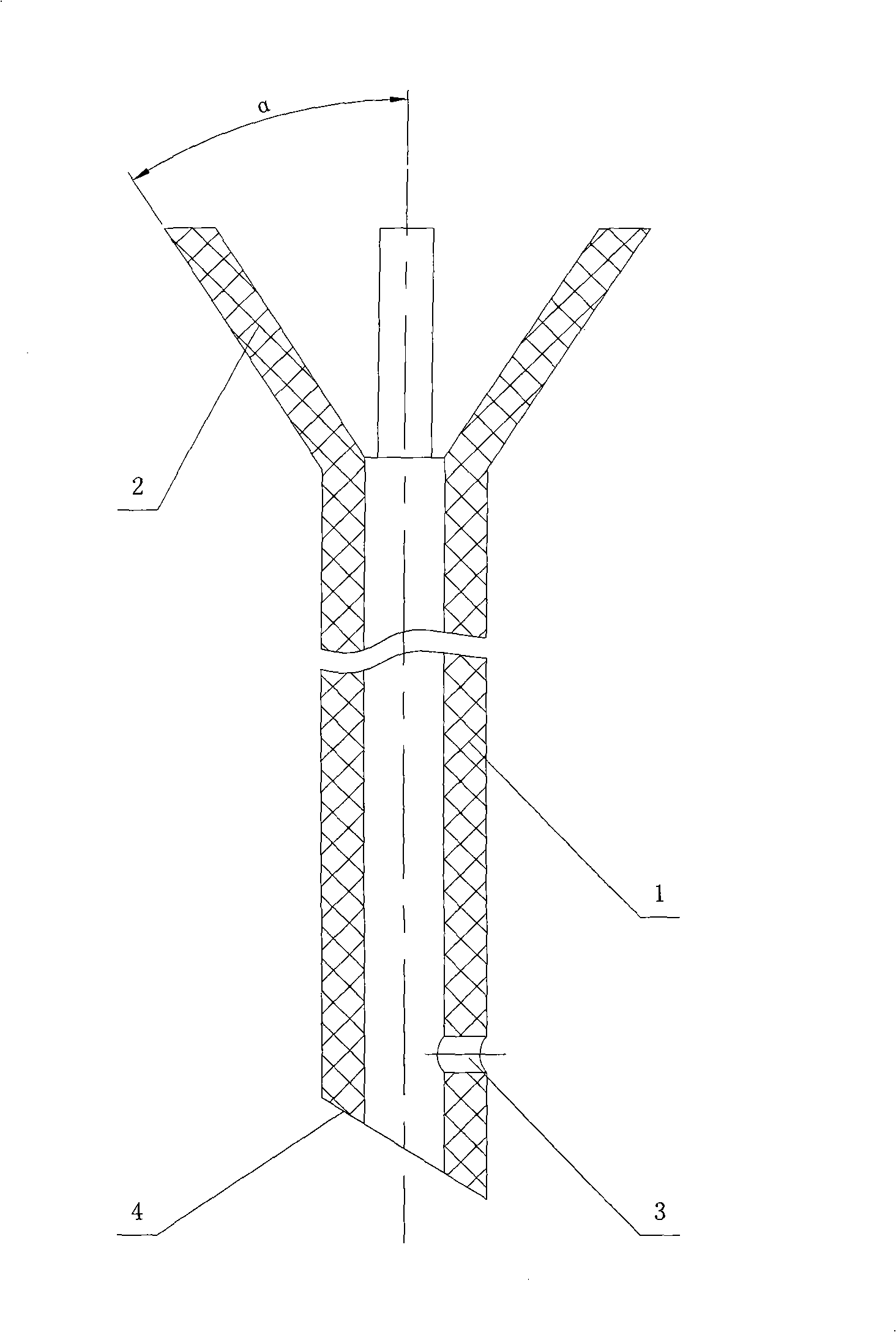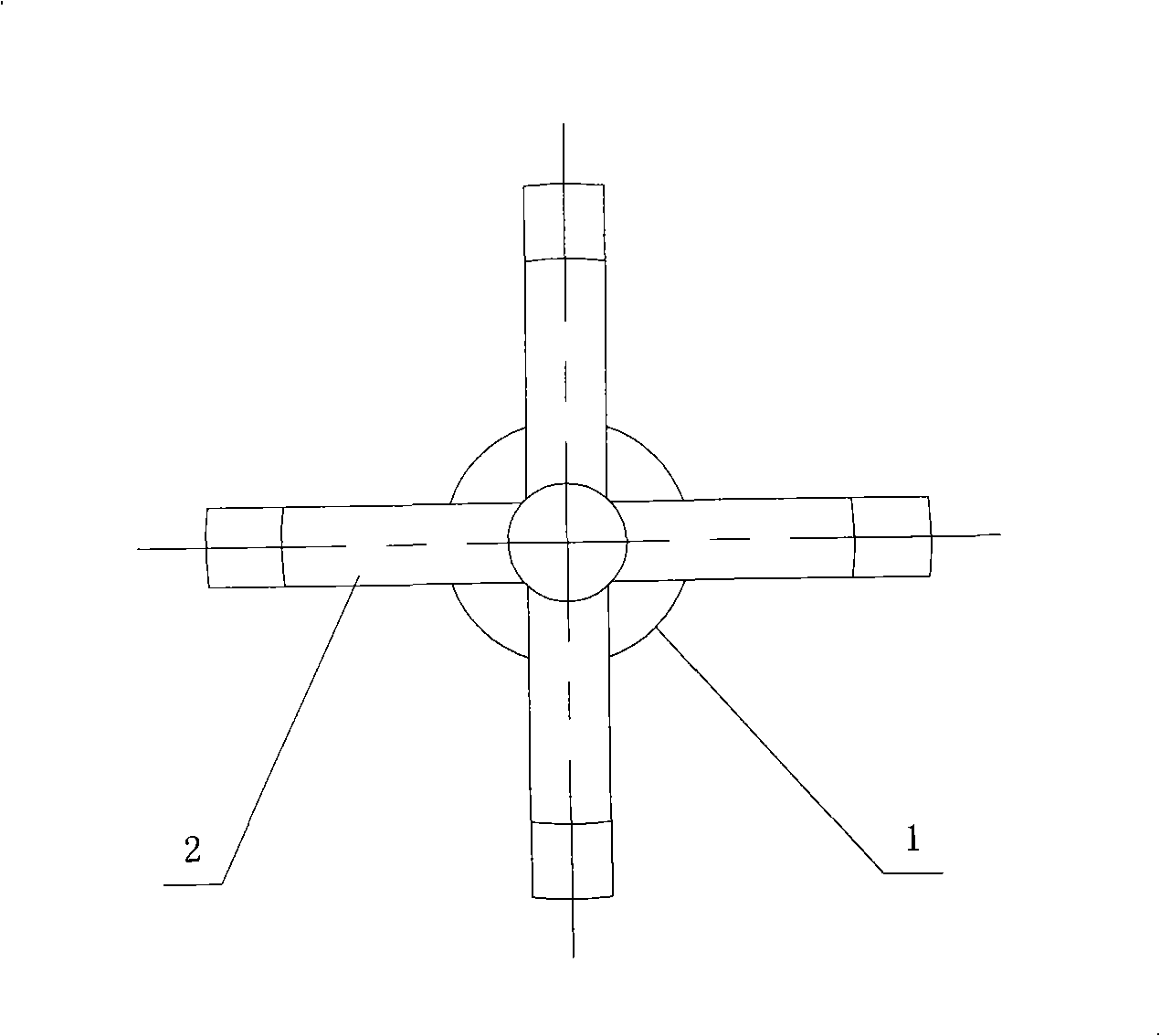Lacrimal canal bracket with aliform fixing part
A technology of fixing part and nasolacrimal duct, applied in the direction of stent and other directions, can solve the problems of complicated operation, long length of fixing part, scarring, etc., and achieve the effect of simplifying the manufacturing process, reducing the contact area and reducing discomfort.
- Summary
- Abstract
- Description
- Claims
- Application Information
AI Technical Summary
Problems solved by technology
Method used
Image
Examples
Embodiment Construction
[0015] Such as figure 1 , figure 2 As shown, the nasolacrimal duct stent with wing-shaped fixing parts of the present invention includes a drainage tube 1 and at least two wing-shaped fixing parts 2. In this embodiment, four wing-shaped fixing parts 2 are provided, and one end of each wing-shaped fixing part 2 It is fixed at the head end of the drainage tube 1 , and the other end extends obliquely in a radial shape, which eliminates the curved structure, simplifies the manufacturing process, and is easy to ensure that the shape of each wing-shaped fixing part 2 is uniform. The included angle α between each wing-shaped fixing portion 2 and the drainage tube 1 is 20°-70°, preferably 30°-50°, and is 35° in this embodiment. The length of the wing-shaped fixing part 2 is shortened, and the contact area with the patient's lacrimal sac is small, which can reduce the discomfort of the patient. When it is implanted into the patient's nasolacrimal duct, it can be folded into a thin t...
PUM
 Login to View More
Login to View More Abstract
Description
Claims
Application Information
 Login to View More
Login to View More - R&D
- Intellectual Property
- Life Sciences
- Materials
- Tech Scout
- Unparalleled Data Quality
- Higher Quality Content
- 60% Fewer Hallucinations
Browse by: Latest US Patents, China's latest patents, Technical Efficacy Thesaurus, Application Domain, Technology Topic, Popular Technical Reports.
© 2025 PatSnap. All rights reserved.Legal|Privacy policy|Modern Slavery Act Transparency Statement|Sitemap|About US| Contact US: help@patsnap.com


